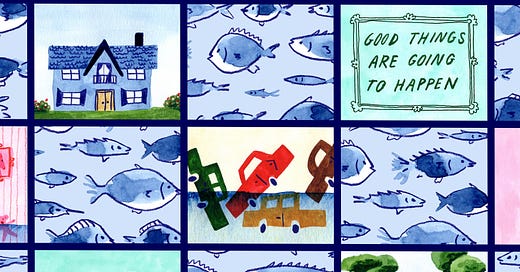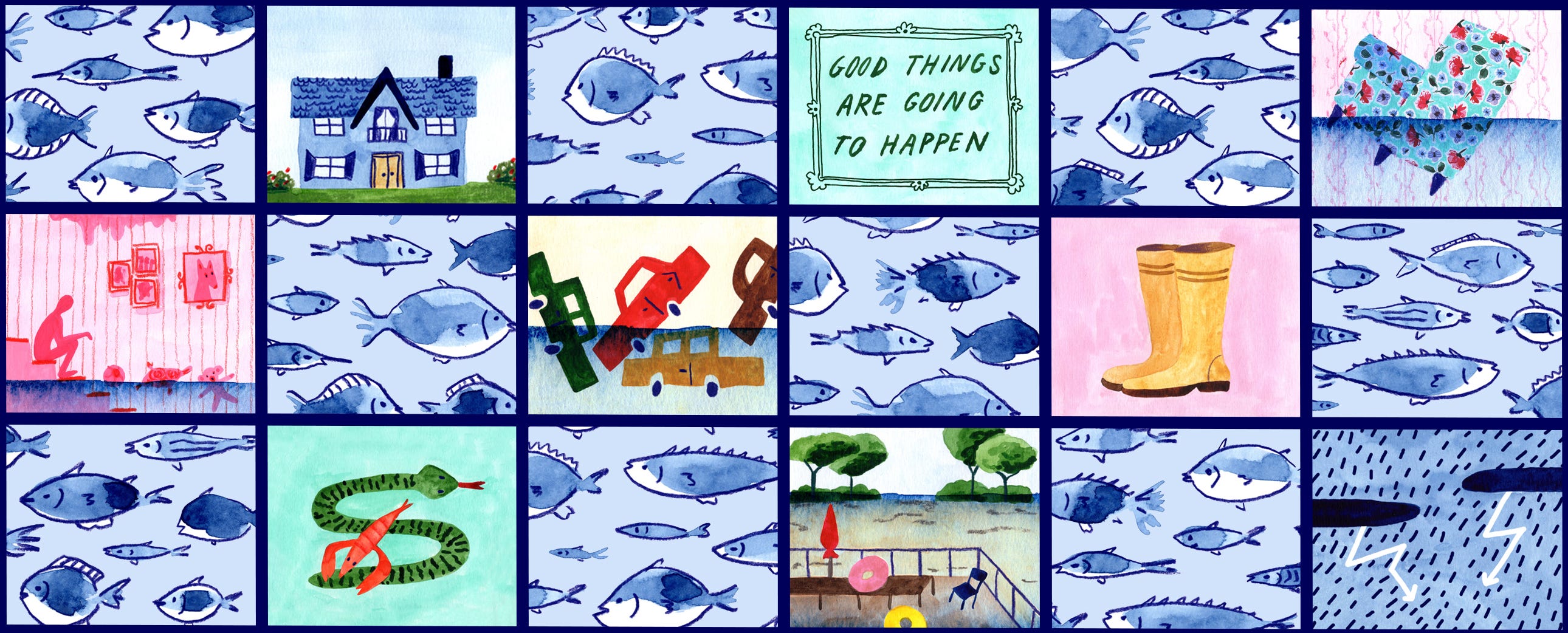Our House Will Flood Again. And Again. Here’s Why We Refuse to Leave.
After Jared Bilski’s home took on four feet of water in a hurricane, he and his wife decided to rebuild—despite the threat of more extreme weather. They’re far from the only ones who will never flee.
This piece is the first in our series, The Ever-Present Liquid, a special collaboration from Narratively and Creative Nonfiction exploring the shape-shifting magic and destructiveness of water in all its forms. You can learn more about this special series and experience the rest of the stories as we publish them here each week throughout September.
By the time I realized that the mysterious puddle a few feet from our back door was coming from the overflowing creek down the hill from our home, we were already screwed. I’d been nervously watching the creek rise steadily all day as the remnants of Hurricane Ida ripped through our small Pennsylvania town, and when the monsoon-caliber rain finally let up at around 11:30 p.m., I thought we’d been spared.
But a little while later, I peered out the window and saw that my deck had completely disappeared and been replaced by a sea of murky brown water that was threatening to swallow up the outdoor furniture that resided there. To reach the deck, the creek outside my house needed to rise nearly 30 feet, a feat that seemed impossible, according to both history and the technology I relied on to tell me when a threat was serious enough for my family and me to get the hell out of the house.
“This can’t be happening — the gauge says the creek crested already. It shouldn’t be coming up here,” I thought as I laid down towels over the rapidly increasing number of spots where water started to squeeze its way into the house. I was that guy who stands outside in a downpour, staring at the weather app on his phone and questioning the reality that’s right in front of him. This can’t be right — it says it’s not raining right now…
Like most Philadelphia suburb residents who lived near the Perkiomen Creek or the nearby Schuylkill River it fed into, I relied on what everyone in our area referred to as “the gauge” — the National Weather Service’s Advanced Hydrologic Prediction Service, a website that tells residents in real time how high the creek is at any given moment, as well as where and when it’s likely to crest and recede. The forecast hadn’t called for record flooding, but the sheer force and consistency of the rain caused me to refresh the website repeatedly while I nervously watched the creek swell. Just before midnight, though, the report on the site was reassuring: The creek that was threatening to invade our home had crested and would soon be rapidly retreating. In other words, we were safe.
The problem was the gauge only measured up to 20 feet, a mark shattered by the historic rainfall that the “remnants” of the hurricane brought to thoroughly unprepared northeastern states in the late summer of 2021. As the more than half a million people from Louisiana to New York who applied for Federal Emergency Management Agency assistance can attest, Ida was just different. After all, when the remnants of a hurricane can trigger a national disaster declaration, you know it’s bad. From the moment the Category 4 hurricane touched down in Louisiana on August 29, 2021 — almost exactly 16 years after Katrina had made landfall there as well — until its remnants passed through the northeastern United States on September 2, it was clear that this would end up being one of the most expensive hurricanes in U.S. history.
Keep reading with a 7-day free trial
Subscribe to Narratively to keep reading this post and get 7 days of free access to the full post archives.





